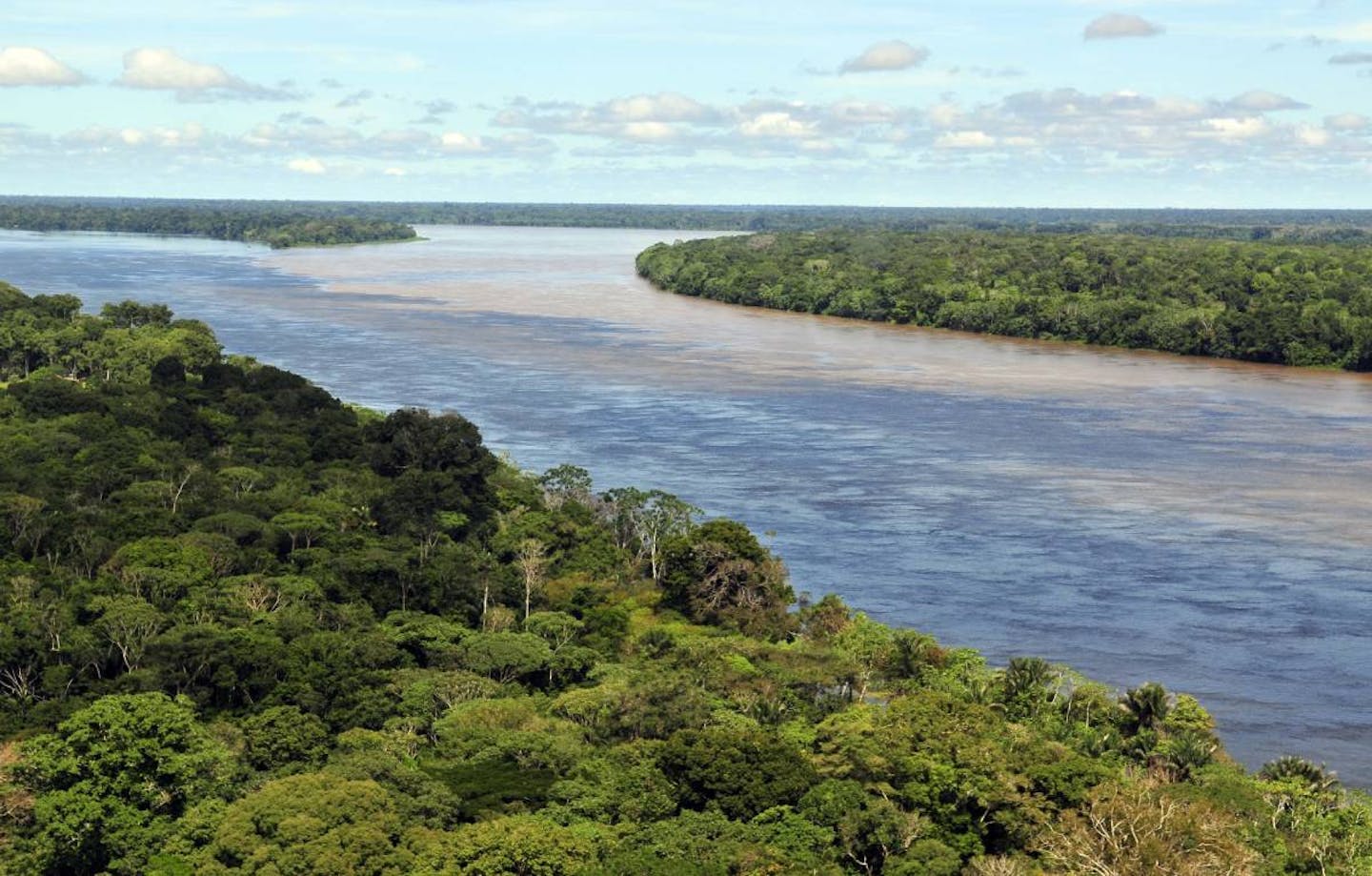New campaign to protect 80% of the Amazonia by 2025
One Earth is proud to be a member organization of Amazonia 80% x 25 Initiative, a new coalition calling for a global agreement for the permanent protection of 80 percent of the Amazonia by 2025 as an urgent measure to avert catastrophic climate tipping points and respond to the planetary crisis with transformative change. It is time for the international community — governments, civil society, corporations — to join the effort to protect the planet.
The Amazon is the largest and most biocultural diverse tropical rainforest in the world. It is home to 511 Indigenous nations including 66 uncontacted groups living in voluntary isolation. Over 300 languages are spoken in this vast region that covers 9 countries (Brazil, Bolivia, Peru, Ecuador, Colombia, Venezuela, Guyana, Suriname and French Guiana). It is home to one third of the Earth’s terrestrial plant and animal species and 20 percent of its flowing freshwater. The rainforest functions like the biological heart of our planet: it stores and sequesters extensive amounts of carbon, regulates the continental and global climate, produces oxygen and rain, and drives weather systems, among other benefits.
Indigenous Territories physically occupy 237 million hectares in the Amazon Basin. The ITs and the National Protected Areas (NPA) are vital to protect the Amazon. Together they cover close to 50 percent of the Amazonia. Approximately half (45 percent) of the intact forest in the Amazon are in Indigenous territories, an area larger than France, Great Britain, Germany, Italy, Norway, and Spain combined.
The Amazon has already lost 17 percent of its forest cover and an additional 7 percent of its rainforests have been degraded. If deforestation and forest degradation combined cross the 20-25 percent threshold, scientists warn that the system will reach an that can translate into the dieback of the entire ecosystem. This would result in massive carbon dioxide emissions with rapid and catastrophic consequences for global climate stability.
We are at the verge of crossing the tipping point. Our actions in the next few years will determine the fate of our planet over the next millennia. Ensuring the integrity of the hydrological systems, biodiversity, and guaranteeing the fundamental role of the Amazon as a global climate regulator requires that at least 80 percent of its forests remain intact.
This is a call for a comprehensive global agreement for the permanent protection of 80 percent of the Amazon Rainforest by 2025, agreed to by all Amazon governments and backed by Indigenous peoples and the global community.
A Pact for the Amazon will require:
- A Pan-Amazon regional vision that lands in a shared strategic plan built upon the strict guidelines of Free, Prior, Informed, Consent (FPIC). To reach the 80 percent by 2025 vision, each Amazon country must develop National Amazon Biome Action Plans (NABAP) to spell out their commitments for meeting the target. The process should be with the full participation of civil society, including Indigenous peoples who have been effective stewards of this biome for millennia.
- 100 percent legal recognition and demarcation of Indigenous lands and the allocation of permanent financial resources that allow their titling and expansion.
- Implementation of a governance model with political representation and formal recognition of the role of Indigenous peoples in reaching this goal at national and international levels.
- An immediate moratorium on deforestation and industrial degradation of all primary forests.
- Forest policy and zoning that enables the creation of intangible zones for areas that remain intact/roadless and other zones that are for industrial activities.
- Ecological restoration for degraded lands.
- Creation of expanded Indigenous or co-managed reserves for unprotected Indigenous that are not currently listed as TIs or ANP and other territories (OECM), with the safeguards and responsibility of the States to guarantee the protection of Indigenous Peoples in Voluntary Isolation and Initial Contact (PIACI).
- Halting key drivers of current and future deforestation and industrial development pressures by suspending new licensing and financing for mining, oil, cattle ranching, large dams, logging, and other industrial activities.
- Conditioned debt forgiveness in exchange for permanent moratoria on industrial extraction in Indigenous territories and protected areas.
- The finance sector commits to ensure respect for the rights of Indigenous peoples and an end to deforestation throughout financed supply chains.
- Supply-chain transparency and accountability.
- The international community’s immediate adoption of policies and frameworks that guarantee a permanent influx of resources to accomplish this target.
- The international community facilitates the financial resources necessary to cover the costs of access to basic services for Indigenous communities, consolidate their self-determination, and strengthen the comprehensive management of territories, sustainable livelihoods and use of ancestral knowledge.
Amazon Basin countries are urged to declare a state of emergency and immediately halt the expansion of destructive industrial activities, government policies, and harmful public subsidies that enable further forest destruction. The state of emergency would address the drivers of deforestation while allowing space for longer-term transition strategies that lead us towards an enduring transformative change.
Industrialized nations must recognize their role in climate change and channel all resources needed to guarantee a just transition for those who inhabit the biome and for their own citizens. The time for action is now. The Indigenous leaders of the nine Amazon countries invite Indigenous communities, scientists, governments, cities, financial institutions, and anyone ready to take action for the planet, to stand with them. Sign the declaration as a first step to avert the Amazonia’s tipping point and protect 80 percent by 2025.



